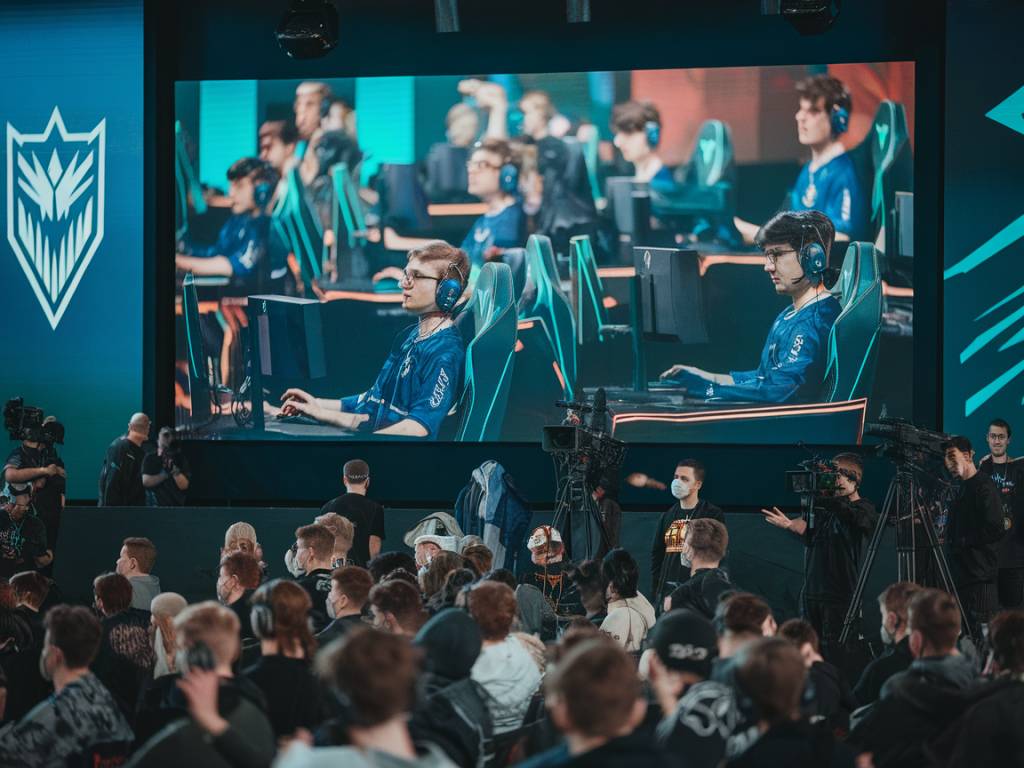In recent years, the world of esports has seen phenomenal growth, not only in terms of player numbers and tournament prize pools but also in media coverage. This analysis delves into the factors driving this growth, the impact on traditional sports media, and the future prospects for esports coverage.
The Rapid Expansion of Esports Media Coverage
Esports media coverage has grown exponentially over the past decade. Various factors have contributed to this expansion, including the rise of digital platforms, changing demographics, and increased recognition of esports as a legitimate form of competition.
Digital Platforms and Streaming Services
The emergence of digital platforms like Twitch, YouTube Gaming, and Facebook Gaming has revolutionized the way esports content is consumed. These platforms provide 24/7 access to live-streamed events, highlights, and player commentary, allowing fans to stay engaged regardless of their location.
Changing Demographics
The Millennial and Gen Z demographics have shown a marked preference for digital and interactive content over traditional media. These groups are not only avid consumers of esports but are also increasingly involved in content creation, acting as a driving force for further media coverage.
Impact on Traditional Sports Media
The growth of esports media coverage has also had a notable impact on traditional sports media outlets. Many traditional sports networks have started to diversify their programming to include esports events, recognizing the growing demand among younger audiences.
Collaborations and Partnerships
Major sports networks such as ESPN, Fox Sports, and Sky Sports have partnered with esports leagues and organizations to broadcast events. These collaborations have led to increased mainstream visibility for esports, bridging the gap between traditional sports fans and the esports community.
Traditional Sports vs. Esports
While some may view esports and traditional sports as competing entities, many industry experts believe they can coexist and complement each other. Traditional sports leagues are exploring esports as a way to reach new audiences and maintain relevance in a rapidly changing media landscape.
Key Drivers Behind the Growth
Several key drivers have fueled the surge in esports media coverage. Understanding these factors can provide insights into the future trajectory of esports as a mainstream entertainment option.
Technological Advancements
Advancements in technology have played a crucial role in the growth of esports media coverage. High-speed internet, improved streaming quality, and the proliferation of smartphones have made it easier than ever to access and consume esports content.
Sponsorship and Investment
The influx of sponsorship and investment in the esports industry has also contributed to increased media coverage. Brands across various sectors, from tech to consumer goods, have recognized the marketing potential of esports and are investing heavily in event sponsorships, team partnerships, and content creation.
Global Audience
Esports boasts a truly global audience, with fans from North America, Europe, Asia, and beyond. The international appeal of esports has prompted media outlets to provide extensive coverage in multiple languages, further driving the growth of esports media.
Challenges and Opportunities
While the future of esports media coverage looks promising, several challenges and opportunities must be considered.
Regulation and Governance
The esports industry, unlike traditional sports, lacks standardized regulations and governance structures. Establishing consistent rules and fair play standards will be crucial for maintaining the integrity and credibility of esports events.
Overcoming Stigma
Despite its rapid growth, esports still faces a degree of stigma and skepticism from certain segments of the population. Increasing public awareness and education about the skill, strategy, and dedication required for esports could help overcome these perceptions.
Monetization Strategies
Effective monetization strategies will be vital for the sustainability of esports media coverage. This includes exploring new revenue streams such as advertising, subscription models, and premium content offerings.
Future Prospects
The future of esports media coverage appears bright, with several trends likely to shape its development in the coming years.
Integration with Traditional Media
As traditional sports media continues to recognize the value of esports, we can expect deeper integration of esports content into mainstream sports programming. This could include more extensive coverage of tournaments, player profiles, and behind-the-scenes features.
Technological Innovations
Emerging technologies such as virtual reality (VR) and augmented reality (AR) have the potential to transform the way esports content is consumed. These innovations could offer immersive viewing experiences, bringing fans closer to the action than ever before.
Esports in Education
The incorporation of esports into educational institutions is another promising avenue for growth. Schools and universities are increasingly recognizing the potential of esports as an educational tool and a career path, leading to further media interest and coverage.
Localized Content
As the global esports audience continues to expand, there will be a growing demand for localized content tailored to specific regions and cultures. Media outlets that can effectively cater to these diverse audiences will be well-positioned for success.
In conclusion, the growth of esports media coverage is a multifaceted phenomenon driven by technological advancements, changing demographics, and strategic partnerships. While challenges remain, the opportunities for further growth and integration are substantial. As esports continues to evolve, its media coverage is likely to become an increasingly prominent part of the global entertainment landscape.
